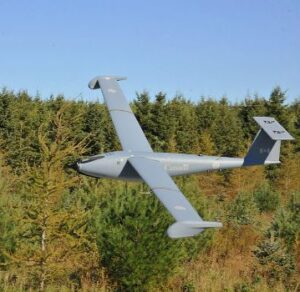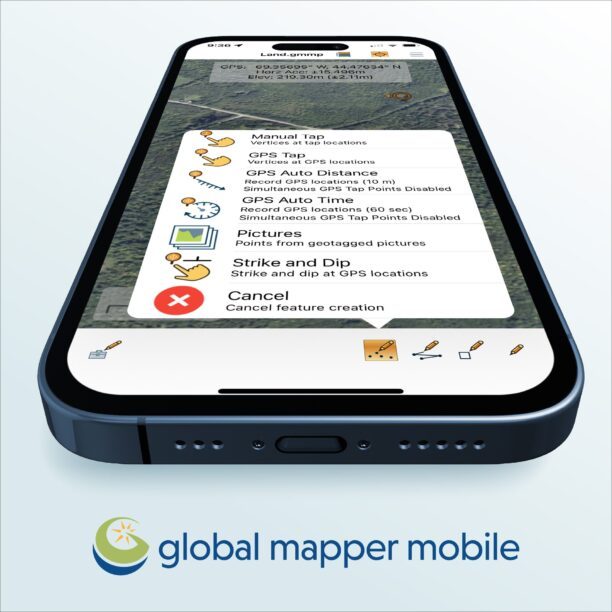The Canadian drone industry is thriving – and regulations are moving forward rapidly. Dawn Zoldi gets an inside view from Glenn Lynch, CEO of Volatus Aerospace, on how those regulations are developing and what’s coming next.
Take Off in the Great White North!
By: Dawn M.K. Zoldi, Guest Contributor
Canadian drones are really taking off. Glenn Lynch, CEO of Volatus Aerospace, a company leading the Canadian drone industry, provides insights into the country’s latest developments in the drone space.
Transport Canada (TC), the Federal Aviation Administration’s (FAA ) northern counterpart, published Part IX of the Canadian Aviation Regulations (CARs), the equivalent of the U.S. Part 107 of the U.S. Code of Federal Regulations (CFRs), in July of 2018. It provides the framework for drones under 25kg/55lbs operating within visual line-of-sight (VLOS). Unlike Part 107, Part IX does not distinguish between recreational and commercial operators. It applies equally to both. Another key distinction from the U.S. system, under Part IX there are two classes of certification:
- Basic – allows operators to fly drones in class G airspace as long as they remain more than 30m (100ft) from bystanders and
- Advanced – allows for flight within controlled airspace as well as reducing the distance from bystanders from 100ft to 15ft for certain drones, and even allow operators to fly over people depending on a safety declaration from the manufacturer of the drone.
Although TC published Part IX almost two full years after the FAA’s Part 107, the country has leaped ahead on the regulatory front. The only point of departure from the U.S. and Europe, Canada has not moved out on remote identification (RID); yet they are nevertheless moving out on operations over people (OOP), BVLOS, UTM trials and more.
Operations Over People. Canada allows OOP flights that meet the RPAS Safety Assurance Manufacturer’s Declaration for flights over people. This sounds a lot like the U.S. OOP Rule’s Means of Compliance (MOC) and Declaration of Compliance (DOC). The U.S. rule, published in January 2021, became effective in April 2021 and remains a work in progress. The FAA has published one MOC in Advisory Circular 107-2A. Canada currently has more than 300 drone variants on the OOP-approved list.
Night Operations. Canada also allows night ops under Part IX, as opposed to by waiver or a separate rule in the U.S. To fly at night in the Great White North, one’s drone must be equipped with position lights that can be seen by the pilot and any visual observers (VOs) and must remain turned on. Use of night vision devices is prohibited for these nocturnal flights.
Traffic Management. Another key TC initiative, the RPAS Traffic Management Action Team plans to operate a number of trials to develop ground rules and best practices for RPAS Traffic Management this year. TC has also approved U.S.-based Iris Automation to test their Casia 360™ detect-and-avoid solution as part of the Canada Pathfinder Program, designed to help Canadian companies receive approval for the aircraft they intend to eventually use in BVLOS operations.
Complex Ops. For operations with drones over 25kg, or who desire to fly over 400 ft or beyond visual line of sight (BVLOS), TC requires a Specific Flight Operations Certificate (SFOC), similar to a FAA 107 waiver. For BVLOS operations, Canada uses the JARUS SORA model for ground and air risk determination. The SORA is required in the BVLOS SFOC application. (For more on Canadian drone regs and the SORA see here).
Beyond Visual Line of Sight. Currently, TC only grants SFOCs for BVLOS operators in isolated areas that fly in atypical and/or uncontrolled airspace. BVLOS in urban environments, densely populated rural areas or controlled airspace are currently not being approved. Volatus has applied for BVLOS SFOCs for six trials across Canada with an aim for a National SFOC before the end of 2021.
The big news is that Canada plans to soft launch low-risk BVLOS regs sometime this summer. Routine low-risk BVLOS without special approval is on track for 2022. Expect that these new Canadian BVLOS regulations will include a specialized training requirement. Volatus has readied itself to provide this training. It recently acquired a company on Prince Edward Island which is also a registered Private Vocational Institute. Volatus is investing approximately $1.6M U.S. dollars in that location to prepare for the pending demands for BVLOS pilot training for both Low Risk, and Medium / High risk BVLOS operations. Its first course is scheduled to launch in June and will focus on the training required for pilots to conduct low risk BVLOS.
According to Lynch, Volatus has had a seat at the TC table, helping to shape BVLOS regs, standards and related training. He says, “We’ve been rolling up our sleeves and doing the tough work to advance the regulations. We carve out time so senior members of our leadership team can actively participate in various regulatory working groups. This allows us to influence policy and prepare for what’s coming, and most importantly, to keep the drone industry moving forward.”
Volatus is not just moving the industry forward. They are disrupting it. From its inception, Volatus’ vision has been to achieve first a national and then an international presence. The company dominated the Canadian drone scene in 2020. In early 2021, it established a presence in the U.S. market, opening its first office in Albany, New York. Lynch informs, “We scoured the industry to find companies in key locations with strong leadership and complementary expertise and then consolidated them using a rollup strategy to form Canada’s largest, technology enabled drone services business. Today we have offices across Canada, in Bogotá Colombia, and most recently we opened our first office in the U.S.” Volatus’ capabilities include R&D, Manufacturing, Commercial products distribution, inspection and imaging services, and training.
Volatus also supports diversity, equity and inclusion in the drone industry by, among other things, sponsoring the Women and Drones Women to Watch Global Awards Program. The Volatus Aerospace Innovation Team Award recognizes a team, group, company, agency or organization in the drone ecosystem that actively encourages and inspires women to disrupt and innovate within the UAS industry. “We whole-heartedly see the need to foster innovation wherever we can and we are looking for diverse partners in industry and academia around the globe to work in joint ventures and strategic alliances to bring the best of innovation and service offerings to our clients. The Innovation Team Award epitomizes who we are and what we are all about. We are proud to sponsor it,” says Lynch. Nominate a deserving team before the May 14th deadline here.
To learn even more about Canadian regulations, check out these three resources:
- Transport Canada Canada’s regulatory body
- NAV Canada – the agency that manages the airspace in Canada and is the regulatory body that you need to get approval from to fly in controlled airspace
- The National Research Council Drone Site Selection tool – the recognized airspace determination tool from drone ops https://nrc.canada.ca/en/drone-tool/
This is one of a series of 5 articles on global drone regulations. Stay tuned for more.
 Dawn M.K. Zoldi (Colonel, USAF, Retired) is a licensed attorney with 28 years of combined active duty military and federal civil service to the Department of the Air Force. She is an intIernationally recognized expert on unmanned aircraft system law and policy, a columnist for several magazines,recipient of the Woman to Watch in UAS (Leadership) Award 2019, President and CEO of UAS Colorado and the CEO of P3 Tech Consulting LLC. For more information, visit her website at: https://www.p3techconsulting.com.
Dawn M.K. Zoldi (Colonel, USAF, Retired) is a licensed attorney with 28 years of combined active duty military and federal civil service to the Department of the Air Force. She is an intIernationally recognized expert on unmanned aircraft system law and policy, a columnist for several magazines,recipient of the Woman to Watch in UAS (Leadership) Award 2019, President and CEO of UAS Colorado and the CEO of P3 Tech Consulting LLC. For more information, visit her website at: https://www.p3techconsulting.com.








[…] Canadian drone industry is taking off: An insider view of Canada’s regulations and new development… […]